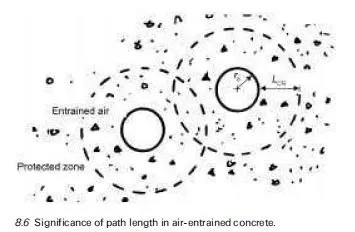Although the use of aggregates that are not susceptible to ASR would be the most obvious option for avoiding the problem, non-reactive aggregates are unavailable in many locations, and importing non-reactive material may not be economically viable. Furthermore, ASR has occurred in a number of cases where prior testing of the aggregate indicated the aggregates were not deleter- iously reactive. Methods of testing aggregates for reactivity have increased in severity, and acceptance criteria have become more stringent with the passage of time to reflect the increasing number of aggregates implicated in field cases of ASR. Adoption of existing testing practices, however, does not guarantee that aggregates will give satisfactory performance in every situation. Consequently, even if aggregates are found not to be deleteriously reactive, further precautions are frequently taken if circumstances demand.
However, because siliceous aggregates that are potentially susceptible to ASR often exhibit a well-characterized `pessimum’ proportion (i.e., maximal expansion at a particular ratio of reactive SiO2: Na2Oe), it is sometimes possible to avoid deleterious expansive effects of ASR simply by using a high enough proportion of the reactive aggregate in concrete to ensure that the mix composition is maintained well beyond its `pessimum’ range (Hobbs, 1988).


